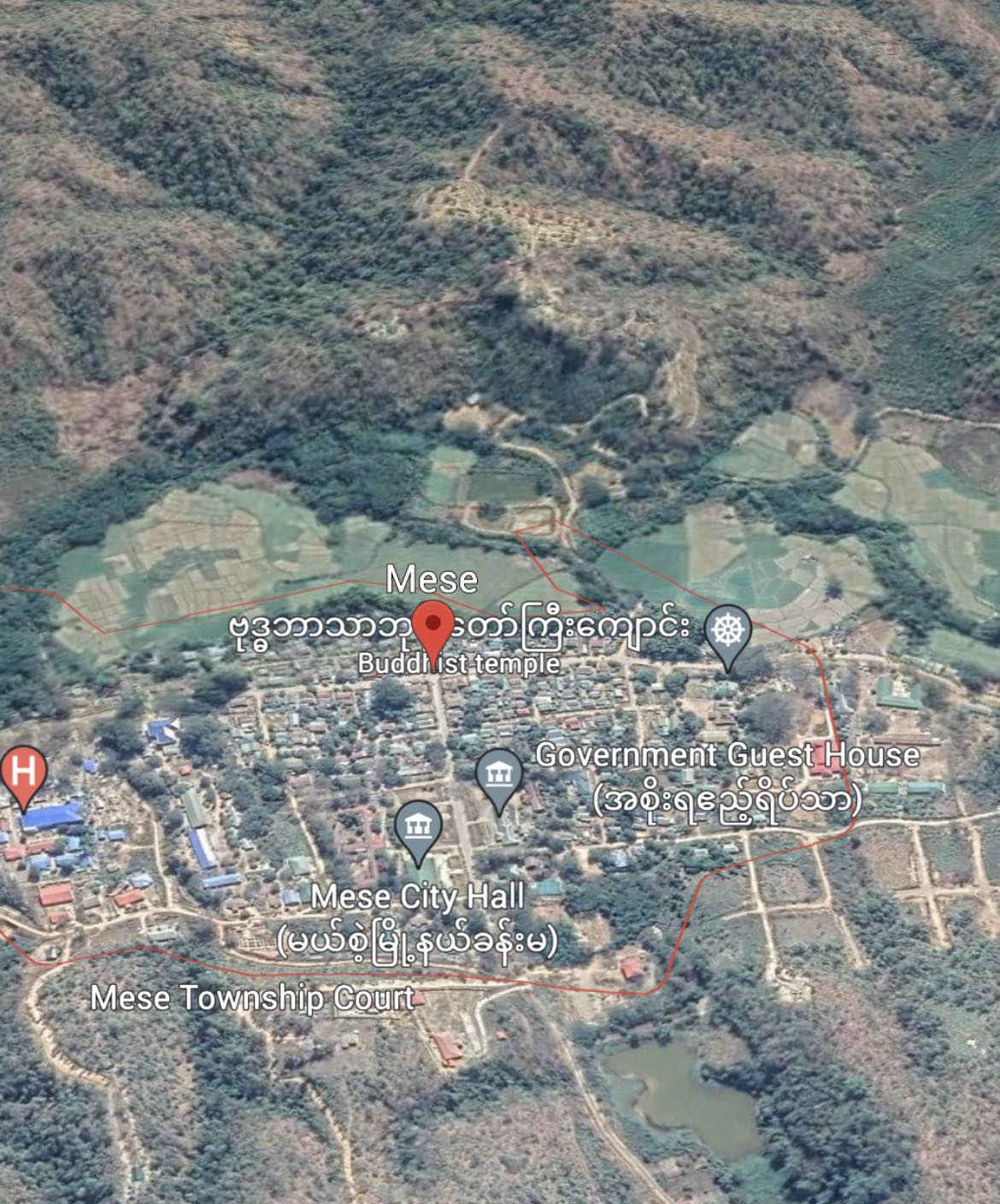Units of the Karenni National People’s Liberation Front (KNPLF), which serves as the Border Guard Force (BGF) in Kayah (Karenni) State under the Myanmar military, have turned on junta troops, resulting in fierce clashes in Maese Township where the KNPLF is based.
A resistance fighter on the front line in Karenni State told The Irrawaddy: “Our sources informed us that [KNPLF] troops have rejoined the revolution, reusing the badges they wore before they transformed into BGF. So, we can say that some BGF troops are now fighting the regime.”
Junta troops have taken control of Pan Tein village, the base of BGF unit 1004, between Hpasawng and Maese townships, following air raids and ground attacks.
BGF units 1004 and 1005 joined resistance forces in their attacks on junta outposts and the police station in Maese town on June 13, according to local sources. Regime troops have retaliated by attacking the two BGF units.
“The junta’s military invited the BGF, KNPLF and the Kayan New Land Party to talks earlier this year, but their leaders did not attend. They are angry about the killing of four KNPLF members in the Mo So massacre. The fighting shows the KNPLF has defected from the Myanmar military and rejoined the other side,” said an ethnic affairs analyst.

Regime troops killed and burned dozens of civilians, including children, near the village of Mo So in Hpruso Township on December 24, 2021. Four KNPLF members who tried to negotiate to free the detainees were tied up and shot dead by junta troops.
Local sources said the KNPLF troops joined the Karenni Army (KA), Karenni Nationalities Defense Force (KNDF) and Karen National Liberation Army in simultaneous attacks on junta outposts near the Thai border and the Maese police station on Tuesday last week.
The Irrawaddy could not independently confirm KNPLF’s involvement in the attacks. However, one of the junta outposts seized by allied resistance forces is located on the border of Karenni and Karen states in an area controlled by the KNPLF.
The KNPLF split from the Karenni National Progressive Party/KA in 1978 before agreeing to a ceasefire in 1994 with the then junta, known as the State Peace and Development Council. The group transformed into the BGF in November 2009 under the constitution drafted by the junta a year earlier.
The KNPLF issued a statement condemning the coup after the military seized power from the democratically elected government in February 2021.
In a joint statement issued on Jan 20 this year, the KNPLF, KA and KNDF called on Myanmar people to continue to support the revolution against military rule. The three groups also vowed to fight the dictatorship side by side with civilians.

Hpasawng and Maese townships, where the KNPLF-turned-BGF is based, have experienced relatively few clashes compared with other areas in Kayah, a resistance stronghold, in the two years since the coup. But fighting has escalated since June 13 after the junta deployed air strikes.
“The regime has been bombing the area. And thousands of residents have fled into Thailand. The area is almost deserted. The two sides can fight freely there now. The Myanmar military does not want to see the area east of the Salween River fall under the control of resistance forces. So, the fighting will be fierce,” said the ethnic affairs analyst.
Some 5,000 residents have crossed the border into Thailand since the fighting erupted on June 13, while others are hiding in forests. Civilian casualties are still unknown.
Resistance forces based in Karenni State formed the Karenni State Interim Executive Council on June 6, with the stated purpose of facilitating pragmatic cooperation among different forces in the state and taking steps toward a federal, democratic Union.

















